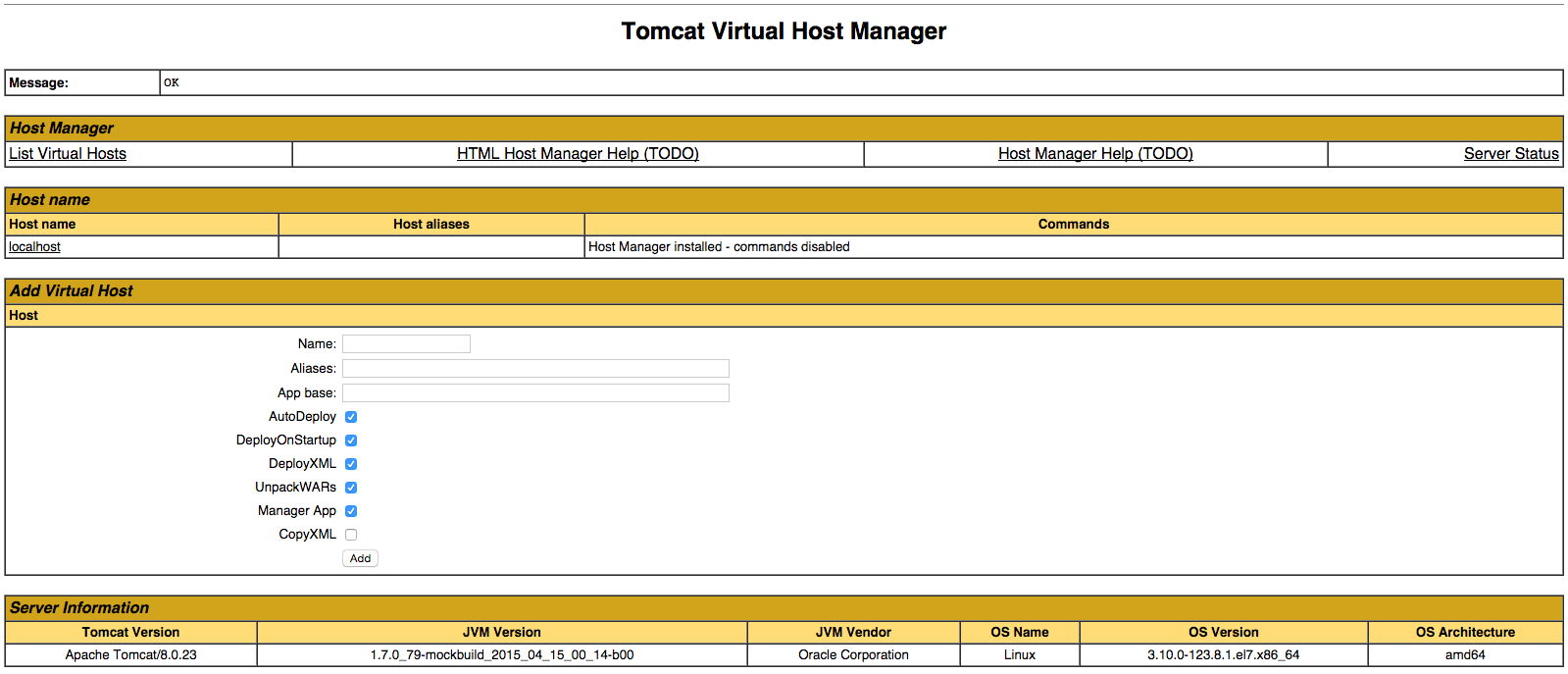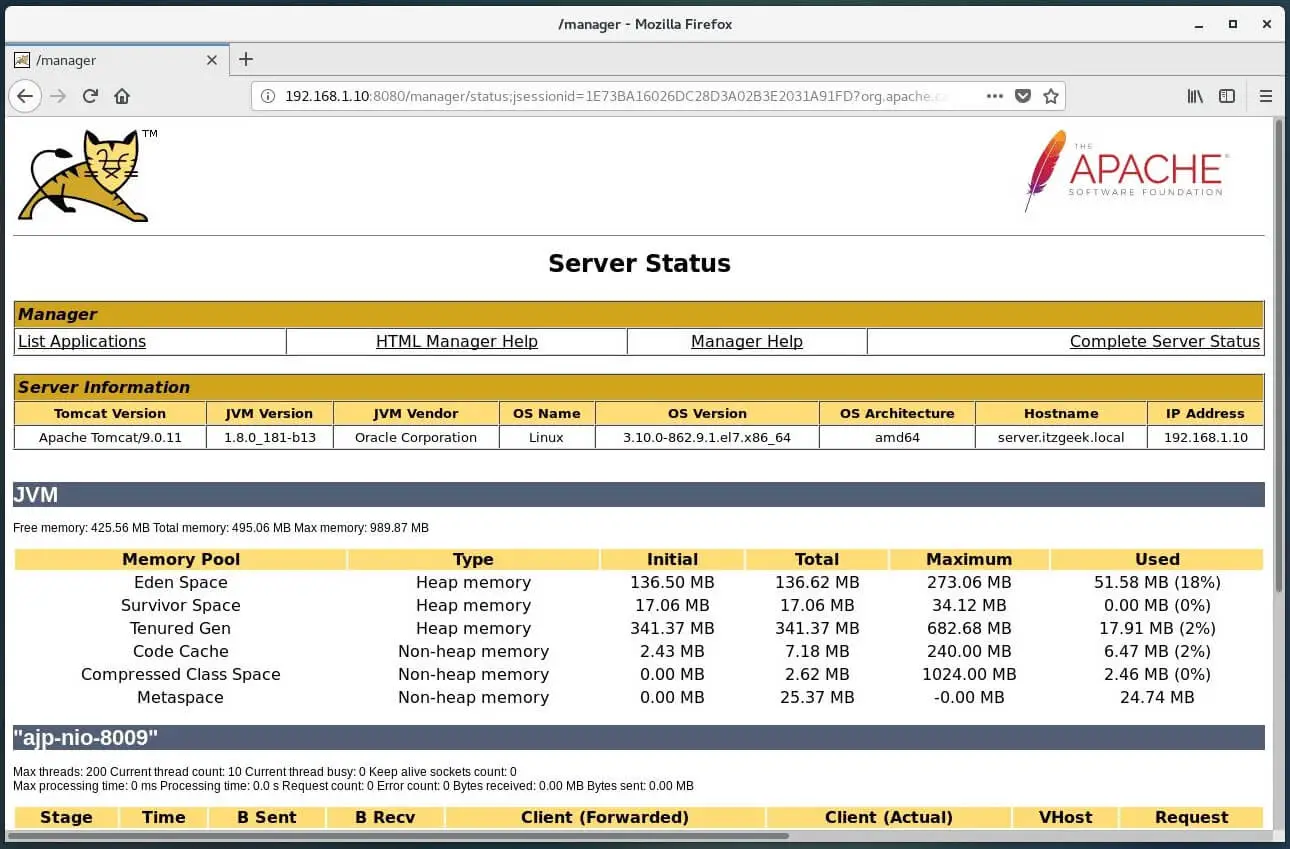
Yum stands for YellowDog Updater Modified. Here, we will use the yum command to fetch all the packages of JDK. But do check which version of Java you are using.

If you have already installed Java Packages, no need to use this command.
#Centos tomcat 8 install#
The first step is to install Java packages. Access the Web-Interface after you Install Tomcat on CentOS.Configure the Interface for Tomcat On CentOS.Adjust the Firewall for Apache Tomcat on CentOS 7.Enable and Start the tomcat server on CentOS.Create a systemd service file for Tomcat on CentOS.Update permissions for Users to Use Tomcat on CentOS.Create Users and User Groups When you Install Tomcat on CentOS.Extract the Tar File to Install Tomcat on CentOS.Install wget to Download and Install Tomcat on CentOS.
#Centos tomcat 8 how to#
Let’s understand how to install Apache Tomcat on CentOS 7. Here, the process is a little bit different. It was quite easy to deploy applications on the tomcat server in Windows. Adding a basic systemd service file, starting, stopping and enabling start on boot also explained. To access it, we use localhost://8080 on Web Browser to view the result. This tutorial explains how to install Apache Tomcat on Red Hat Enterprise Linux 8 or Centos 8 from zip file. What we did there, simply build our code on MVC structure (Model-View-Controller), build the Java – Web applications in Spring boot or in Eclipse and deploy it on tomcat server. However, after some time the Apache Tomcat was donated to Apache Software Foundation.

Just look upon its versatility! Have you ever thought that how tomcat started off? What purpose did it serve initially?Īpache Tomcat started off as a servlet reference implementation by James Duncan Davidson, a Software Architect at Sun Microsystems and later on it was converted to an open-source. You can use Apache Tomcat on Windows, Ubuntu, CentOS, Debian and so on. Basically tomcat can work upon various operating systems that’s why it is also called cross-platform software.


 0 kommentar(er)
0 kommentar(er)
